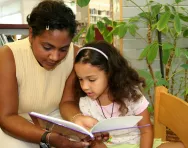Important update from TheSchoolRun
For the past 13 years, TheSchoolRun has been run by a small team of mums working from home, dedicated to providing quality educational resources to primary school parents. Unfortunately, rising supplier costs and falling revenue have made it impossible for us to continue operating, and we’ve had to make the difficult decision to close. The good news: We’ve arranged for another educational provider to take over many of our resources. These will be hosted on a new portal, where the content will be updated and expanded to support your child’s learning.
What this means for subscribers:
- Your subscription is still active, and for now, you can keep using the website as normal — just log in with your usual details to access all our articles and resources*.
- In a few months, all resources will move to the new portal. You’ll continue to have access there until your subscription ends. We’ll send you full details nearer the time.
- As a thank you for your support, we’ll also be sending you 16 primary school eBooks (worth £108.84) to download and keep.
A few changes to be aware of:
- The Learning Journey weekly email has ended, but your child’s plan will still be updated on your dashboard each Monday. Just log in to see the recommended worksheets.
- The 11+ weekly emails have now ended. We sent you all the remaining emails in the series at the end of March — please check your inbox (and spam folder) if you haven’t seen them. You can also follow the full programme here: 11+ Learning Journey.
If you have any questions, please contact us at [email protected]. Thank you for being part of our journey it’s been a privilege to support your family’s learning.
*If you need to reset your password, it will still work as usual. Please check your spam folder if the reset email doesn’t appear in your inbox.
Welsh language teaching in Wales

In 2007, the Welsh government published its Welsh-medium education strategy, aimed at improving the teaching and learning of the language throughout the country. It drew on an earlier vision to create a truly bilingual Wales. As a result, all children attending school in Wales now learn Welsh from Key Stage 2 through to Key Stage 4 (GCSE level), and around a quarter of primary school pupils are taught predominantly through the medium of Welsh.
The different types of Welsh primary school
There are five main types of primary school in Wales, differentiated by their approach to the Welsh language.
Welsh-medium primary schools Welsh is the main language of the curriculum and the school. All teaching in the Foundation Stage, and 70 per cent of the teaching in Key Stage 2, is in Welsh.
Dual stream primary schools Welsh-medium and English-medium teaching exist side by side, and children are placed in either the English or the Welsh stream.
Tranditional primary schools Teaching is mainly in Welsh in the Foundation Stage. In Key Stage 2, both English and Welsh are used, but with a greater emphasis on Welsh (50 to 70 per cent of teaching).
Predominantly English-medium primary schools but with significant use of Welsh Welsh and English are used, but English is the predominant language. Welsh is used 20 to 50 per cent of the time.
Predominantly English-medium primary schools English is the main language, with Welsh taught as a second language.
Welsh-medium schools explained
As the name suggests, Welsh is the main language used in teaching and everyday communication in Welsh-medium schools. In the Foundation Stage (Nursery to Year 2), all children are taught in Welsh. In Key Stage 2 (Years 3 to 6) at least 70 per cent of the curriculum is taught in Welsh.
‘As soon as children come into Nursery, everything is taught through the medium of Welsh, with very little English,’ explains Sarah Davies, Welsh language coordinator at Ysgol Sant Baruc in Barry. ‘For example, we’ll give children a command in Welsh, repeat it in English, then say it again in Welsh to reinforce it. At this age, children are like sponges; the more you give them, the more they’ll take in.’
In Welsh-medium schools, staff and children communicate in Welsh both inside and outside the classroom. Welsh and English are used to communicate with parents.
There are around 450 Welsh-medium primary schools in Wales, and 25 per cent of Year 2 children are taught in Welsh as their main language.
The benefits of Welsh-medium education
So why choose a Welsh-medium education? The main benefit, according to RhAG (Parents for Welsh-Medium Education), is that children become proficient in Welsh through being immersed in the language from the start of primary school.
‘Parents like the fact that children are completely bilingual by the end of Key Stage 2,’ agrees Sarah. ‘Our English results are just as good as English-medium primary schools’, but they are equally competent in Welsh.’ This can be a real asset in the Welsh job market, where more opportunities are open to Welsh speakers.
There are also educational benefits in learning two languages, with research showing that it helps develop cognitive skills. Children in Welsh-medium schools often have superior writing skills and find it easier to learn other foreign languages as they get older, due to their early grounding in two languages.
Welsh-medium schools aren’t just about language; children also learn about, and become a part of, the country’s culture. For example, many Welsh-medium schools compete in the Urdd Eisteddfod, an annual national youth arts festival, with children showing off their skills in disciplines ranging from dramatic presentation to street dance.
It’s also expected that children who attend Welsh-medium primary schools will transition to Welsh-medium secondary schools, and in many areas of Wales, these schools are highly regarded and achieve better results than English-medium schools.
Welsh-medium schools for English-speaking children
As an English-speaking parent, the idea of sending your child to a Welsh-medium school may sound strange, but the vast majority of pupils at these schools (with the exception of in the small pockets of Wales where most people are Welsh-speaking) don’t come from Welsh-speaking homes. ‘In our school, only one child comes from a family where both parents speak Welsh; for all the rest, English is the language of the home,’ Sarah explains. ‘But by immersing them in Welsh from Nursery onwards, they become fluent very quickly. In 23 years, I’ve only taught one child who didn’t get on with a Welsh education.’
Miranda Davies moved to South Wales when her children were small. ‘I’d never imagined sending my children to school in another language, but people kept encouraging us to look at the Welsh school, and when we did, we fell in love with the whole ethos and character of Welsh-medium education,’ says Miranda, mum to Alice, seven, and Rosalind, five. ‘My eldest daughter is now completely fluent in Welsh; she speaks comfortably and with incredible speed, and can read in both languages. Rosalind is only just becoming fluent, but her comprehension is excellent and when she writes stories at home, she can do so in either language.’
Welsh-medium education for Welsh-speaking children
Attending a Welsh-medium school is equally important for children from Welsh-speaking families. According to RhAG, without academic input, these children can lose confidence in their ability to speak the language. It’s also valuable from a cultural point of view, helping to preserve families’ heritage.
Angharad Parsons is a Welsh speaker whose son Elias, seven, attends a Welsh-medium school. ‘I was educated in Welsh myself, and I value the breadth of opportunity pupils get in a Welsh-medium school,’ she says. ‘Having a second language is a great skill, and Elias gets to participate in events like the Eisteddfod, which develop confidence, teamwork and a sense of community.
‘I speak Welsh to Elias, but as my husband is English, we mainly speak English when he’s at home. We read to him in both languages, and although he’s only just started learning English in Key Stage 2, he reads fluently in both English and Welsh.’
Supporting your child with a Welsh education
One of the big questions for any English-speaking parent considering a Welsh-medium school is how they will support their child’s learning, but schools are aware that this is a potential issue.
‘When children join the school, we hold a parents’ evening where we go through how parents can help, and we give them a sheet that shows how to pronounce Welsh sounds,’ explains Sarah. ‘Children bring home Welsh reading books, but when I set homework I’m careful to make sure it’s something parents can handle. As children get older, being able to translate their homework to their parents and work on it independently is a skill in itself.’
Many parents opt to learn the basics of the language themselves. ‘In the first three years of my children’s schooling, I went to a two-hour Welsh class every week to understand the language, pronunciation and grammar,’ says Miranda. ‘I can now understand most of the reading books, and the school plays!’
Although children in Welsh-medium schools are encouraged to speak Welsh all the time, often with rewards like stickers for speaking Welsh at playtimes, the schools communicate with parents in both languages.
Journalist Cathryn Scott (Cardiff Mummy Says) has a brilliant list of online learning ideas for children in Welsh medium education to consult and advice for non-Welsh-speaking parents whose children attend Welsh-medium schools.
Amser Gartref BookTrust Cymru (BookTrust Cymru HomeTime) also offers stories, rhymes, songs, games and activities from great authors, illustrators and storytellers from Wales.
How English is taught in Welsh-medium schools
Although Welsh is the main language of Welsh-medium schools, children are expected to achieve the same standard in English at the end of Key Stage 2 as pupils in English-medium schools. English is introduced as a formal subject in Year 3, but is given more weight than a second language would be in an English-medium school.
‘Because most children come from English-speaking homes, they’ve got a good grounding in English, so when we start phonics in Year 3 they pick it up quickly,’ says Sarah. ‘They bring home reading books in English and Welsh, and we have volunteer reading partners to help. By Year 6, they’ve completely caught up with their English counterparts.’
Up to 30 per cent of the teaching in Key Stage 2 is in English, and not just in English lessons. Welsh-medium teachers make sure they introduce the English translation of terms in subjects like maths, science and history, so their English doesn’t suffer: vital for those children who move on to an English-medium secondary school.
Welsh as a second language
Even in English-medium schools, Welsh is a compulsory curriculum subject up to GCSE level in Wales. Welsh is introduced as a second language in Year 3, and is typically given more weight than a second language would be in an English primary school.
Children are expected to develop skills in four areas of communication: oracy, reading, writing and wider communication. Welsh learning is extended throughout the curriculum: for example, children use ICT skills to develop their Welsh, and use the language in numeracy, information gathering and recording data. Up to 20 per cent of the overall teaching takes places in Welsh.
Although English is the first language in these schools, some Welsh is used, with the aim of improving children’s everyday language skills. It’s expected that children will go on to attend English-medium secondary schools, but continue to learn Welsh as a second language.








